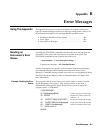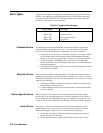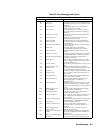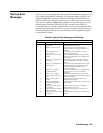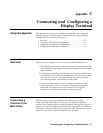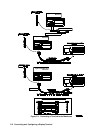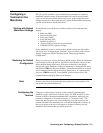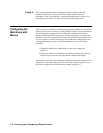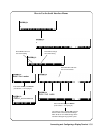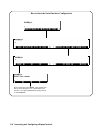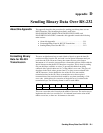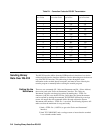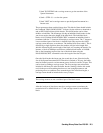
1
Configuring a
Terminal for the
Mainframe
We’ll first set the terminal’s serial communication parameters to match the
mainframe’s default settings. If the mainframe is new and its factory default
values are still set, the terminal will be ready to use. If the settings have been
changed and you don’t know what they are (Agilent E1300 with no front panel),
you will restore them to their default values.
Starting with Default
Mainframe Settings
The mainframe leaves the factory with these default serial communication
settings:
• Baud rate; 9600
• Data word width; 8 bits
• Parity type; NONE
• Parity checking; OFF
• Number of stop bits; 1
• Pacing; XON (for both receive and transmit)
• DTR and RTS ON (signal level high)
If your mainframe is new, or you know these default settings are still in effect
you can go on to “Configuring the Terminal”. If you are unsure of the current
settings, continue on with the following section “Restoring the Default
Configuration”.
Restoring the Default
Configuration
There is an easy way to restore the factory default settings. While the mainframe
is performing its power-up self-test, the built-in serial interface always uses the
factory default settings listed above. With your terminal set to the default
settings, turn on the mainframe. While the mainframe is “Testing ROM”, press
and hold the CTRL key and press the R key. The mainframe will reset its stored
serial communication settings to the factory default values. It is important that
you press CTRL-R during the “Testing ROM” portion of the self-test. The
terminal should now display "Select an instrument".
Note Restoring the default serial communication settings also clears both the User
and System non-volatile RAM areas.
Configuring the
Terminal
Using your terminal owner’s manual, set the terminal’s communication
parameters to the values shown in the list above. For DTR and RTS, set your
terminal to DTR or Hardware handshake OFF. In addition, make sure your
terminal is configured to “Transmit Functions” or “Transmit Codes”. This
means that when you press one of the editing keys (e.g. right arrow key) the
terminal will send to the mainframe, the code which corresponds to the key. If
this not set properly, the cursor will appear to respond to the keys, but the
mainframe will not know that you moved the cursor.
Connecting and Configuring a Display Terminal C-3



